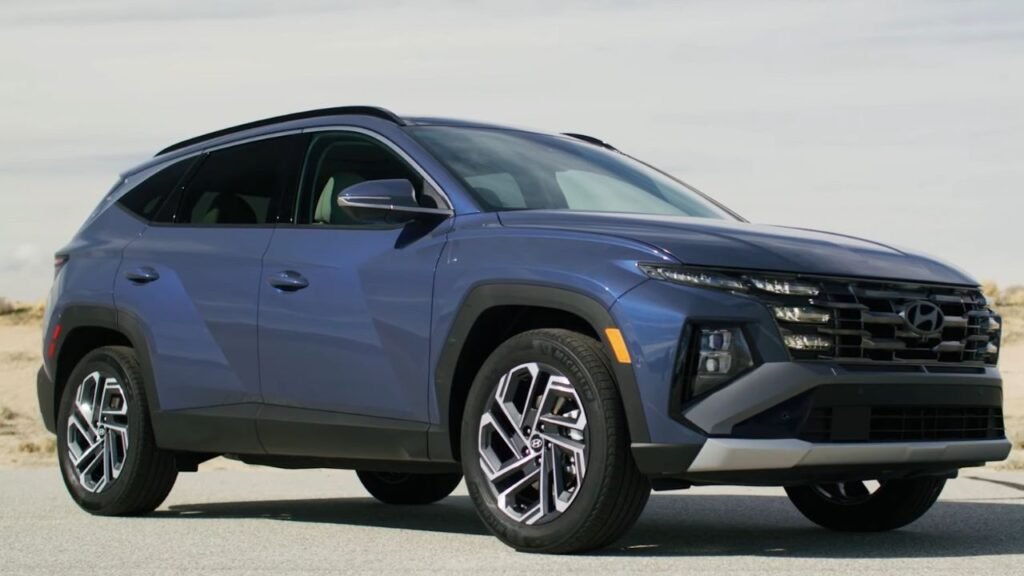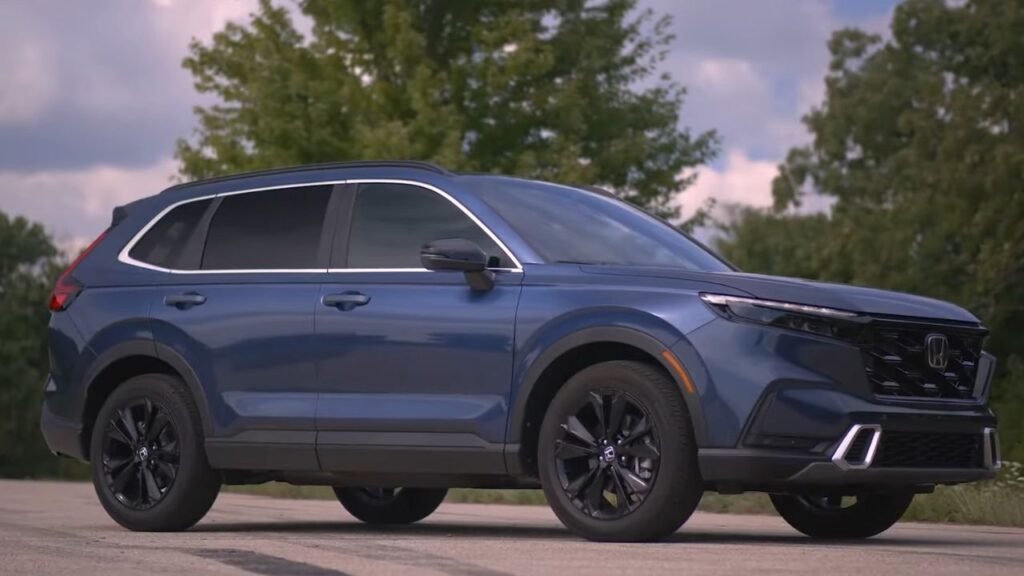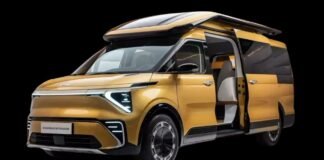Hello readers, this is our comprehensive list of best suvs for seniors which offers proper seat height/hip point, wide door openings, physical buttons, blind-spot monitoring, and automatic emergency braking.
What matters for seniors?

- Seat height and hip point: An optimal “H‑point” (hip pivot) reduces crouching or climbing; studies note that cushion and suspension deflection can lower measured H‑point by 25–40 mm, so real-world seat height matters more than brochure specs for ease of entry and exit. AARP emphasizes proper seat height to avoid crouching or climbing during ingress/egress, which is one of the most important comfort and safety factors for aging joints. Vehicles with an upright seating position and wide, tall door openings (around 800–900 mm width and 1330–1380 mm door height in accessibility research) make getting in and out substantially easier.
- Visibility and mirrors: Larger mirrors and good outward visibility reduce blind spots and workload; upgrading mirrors and lighting further helps seniors, especially at night or in busy traffic conditions. Compact and midsize SUVs with upright glass areas typically offer clearer sightlines than low-roof crossovers with thick pillars, aiding lane changes and parking.
- Controls and tech: Physical buttons for climate/audio plus simple, readable interfaces reduce distraction and cognitive load compared with screen-heavy setups; AAA and AARP recommend prioritizing intuitive controls alongside key safety systems. Commonly recommended ADAS include blind-spot monitoring, rear cross-traffic alert, lane keeping assist, and automatic emergency braking to mitigate common collision types for older drivers.
- Seating support and adjustability: Six‑way or greater power seats with lumbar support help accommodate limited range of motion or hip/knee pain; AAA’s “Smart Features” highlights adjustability and supportive seating for seniors with musculoskeletal concerns. Heated seats, a low door sill (around 40–90 mm above the floor in accessibility guidance), and grab handles reduce strain during ingress/egress and in cold conditions.
- Safety mindset: Seniors already tend to be cautious—belt use and sober driving are strengths—but modern crash avoidance systems materially add layers of protection for reaction-time and visibility challenges. Pair tech with defensive-driving habits like longer following distances and minimizing distractions for a calmer drive.
Top senior‑friendly SUVs in 2025/2026

Subaru Forester
Valued for upright seating, great visibility, and easy entry/exit, making it a recurring pick in senior‑focused lists; standard driver aids and practical cabin layout reduce fatigue on daily trips. Forester’s tall doors and square cargo area simplify loading walkers or golf bags without awkward lifting angles.
Why the Forester helps seniors?
- Easy entry and exit: The moderate ride height limits crouching or climbing during ingress/egress, aligning with AARP guidance that proper seat height is one of the most important accessibility factors for older adults. A wide rear gate reduces awkward twisting and heavy lifting when loading walkers or groceries, which AAA highlights as a benefit of power tailgates and low‑effort closures for those with arthritis or limited strength.
- Lower workload on the road: EyeSight assistance with lane and braking support adds a safety buffer where reaction time may be slower, and older adults report appreciating simpler, Level‑1 style aids that enhance control without feeling intrusive. Straightforward interfaces and physical controls reduce fine‑motor strain and “eyes off road” time, which AAA recommends for seniors with diminished dexterity.
Honda CR‑V
Combines supportive front seats, balanced ride comfort, and intuitive controls with efficient powertrains; its popularity comes from a calm, predictable driving character and strong safety tech coverage. The CR‑V’s cabin ergonomics and storage solutions help keep essentials within reach without bending or twisting.
Why the CR‑V helps seniors?
- Space and visibility: An especially roomy cargo bay means walkers, folding wheelchairs, or strollers fit flat without stacking, reducing bending and trip hazards; AARP and AAA both emphasize choosing vehicles that accommodate mobility devices to keep trips independent and low‑effort. A tight turning circle eases U‑turns and mall parking, lowering the frequency of neck twisting that can be difficult as cervical mobility decreases with age.
- Calm driving and safety: The hybrid’s smooth, quiet power delivery minimizes fatigue in stop‑go traffic, while Honda Sensing layers core protection; research shows ADAS reduces workload and supports autonomy when interfaces are simple and training is clear.
Toyota RAV4
Straightforward controls, wide availability of driver assists, and hybrid options for low running costs; the seating position gives a commanding view without being tall to climb into. Reliability track record and resale strength appeal to retirees planning for longer ownership cycles.
Why the RAV4 helps seniors?
- Comfortable step‑in height: Around 8.5–8.6 inches of clearance offers a confident view without turning entry into a climb, aligning with ergonomic advice to avoid large vertical steps for those with knee or hip pain. Cargo volume that’s generous but not too deep helps maintain good posture when loading, a small detail that matters with back or shoulder limitations referenced in AAA guidance.
- Helpful assistance tech: Toyota Safety Sense with lane support, full‑speed adaptive cruise, and pre‑collision braking reduces the burden of speed control and hazard detection; multiple studies and briefs note that such systems can reduce certain crash types for older drivers when used consistently and understood well.
Hyundai Tucson
Known for smooth ride quality, roomy seating, and warranty value; widely available safety features and a calm cabin make it easy to live with day to day. Trim choices allow mixing physical controls with modern screens to suit tech comfort levels.
- Cabin and tech: Known for ride comfort and room, with trims mixing larger touchscreens and physical controls; availability varies by market and year, so verifying presence of hard keys for HVAC/audio on the chosen trim is key for seniors preferring tactile controls.
- Safety equipment and warranty value are strong points highlighted in comparative rankings, supporting low-stress ownership over multiple years.
Kia Sorento Hybrid
Higher hip point than compact crossovers with three-row flexibility if carrying family; hybrid torque makes gentle, quiet acceleration that reduces fatigue. Sorento’s feature mix includes active safety tech and power seat options that benefit range-of-motion limits.
- Packaging and access: Offers a slightly higher hip point than compact SUVs and optional three rows for grandkids; hybrid torque enables smoother, quieter takeoff that reduces fatigue in stop‑go traffic, with driver-assist availability across trims. Prioritize trims with power front seats and lumbar for ease of stand‑up motion after long drives.
Buick Encore GX
Frequently praised for quiet ride, upright seats, wide/low door openings, and clear physical controls; highway economy up to an estimated 31 mpg and a 5‑year/60,000‑mile powertrain warranty are noted advantages. Its modest size eases tight parking and urban errands without sacrificing everyday cargo versatility.
- Size and efficiency: Praised for upright seating, quiet tuning, and simple controls; highway economy estimates around low‑30s mpg and a 5‑yr/60k‑mi powertrain warranty make it attractive for budget‑minded retirees. Its compact footprint eases urban parking while retaining a versatile cargo bay for daily errands.
Mazda CX‑5
Supportive seats, refined ride, and an elevated seating position aid comfort; driver‑assistance coverage is robust, and handling stability builds confidence. For seniors wanting a calm yet planted feel, the CX‑5’s chassis tuning reduces body motions that can aggravate neck or back tension.
- Seating and dynamics: Supportive front seats, calm ride, and confidence‑building handling are standout traits; driver‑assist coverage is broad in recent model years and suits seniors who value stability over sportiness. Seek trims with power lumbar and heated seats, especially for those with back or hip sensitivities on longer highway stretches.
Quick buying checklist
- Aim for an upright seat with power height/tilt and lumbar; verify standing up requires one smooth push without using the door for leverage.
- Confirm wide door openings with low sills and accessible grab handles; bring a jacket and typical footwear for a realistic ingress/egress test.
- Demand AEB, BSM, RCTA, and lane keeping assist; adjust sensitivity and alerts to personal comfort during the test drive.
- Prefer cabins with physical climate/audio controls and high‑contrast displays; avoid screen-only HVAC if tech comfort is moderate.
- Evaluate parking ease, turning circle, and over‑the‑shoulder visibility in a crowded lot; consider larger mirrors and better bulbs if needed.


